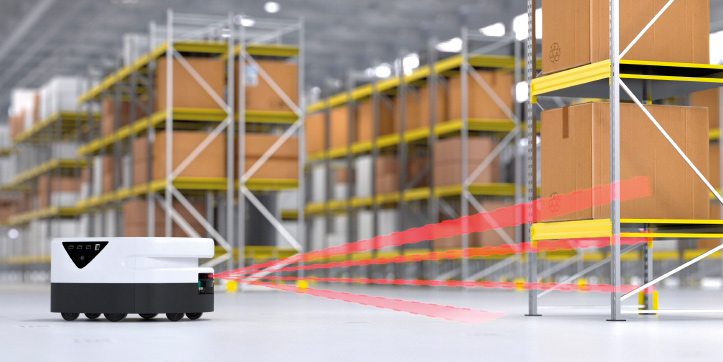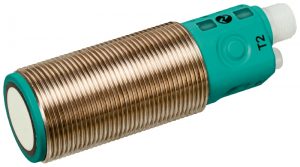AMR Glass Detection with Ultrasonic Sensors
Content of This Article
AMR Glass Detection with Ultrasonic Sensors
Autonomous mobile robots, AMRs, typically use LiDAR sensors for the detection of objects. These sensors emit light and rely on a reflection to measure the distance to a particular surface. This is a great method for detecting solid objects but can create challenges when surrounded by transparent materials like glass. In these cases, the emitted light can pass through the material and cause collisions or false readings and loss of position. This type of false reading can result in product damage, downtime, or human injury.
Object Detection and Level Measurement
Ultrasonic sensors can be used to solve even the most complex tasks involving object detection or level measurement because their measuring method works reliably under almost all conditions. The sensors emit high frequency sound pulses, which are reflected from a target back to the transducer. Based on the propagation time of the pulses emitted, the distance between the sensor and the object is then measured. Since sound is used instead of light, the color and surface material have no impact on the sensing. This means that the robot can accurately detect glass and other transparent objects.

Autonomous mobile robots usually use LiDAR sensors for navigation.
Complete Coverage for An AMR
Pepperl+Fuchs offers a variety of ultrasonic sensors with measuring ranges up to ten meters, minimal dead bands, and various outputs—including digital, analog, and pulse width modulation. They are equipped with a synchronization function that allows multiple sensors to be mounted close together. Because of this, sensors can be used in an array without cross-talk or interference between sensors—providing complete coverage around the AMR.


More Information
Subscribe to our newsletter and receive regular news and interesting facts from the world of automation.
